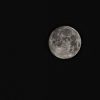How the Moon Got "Sunburns" - Solar Wind and Magnetic Fields
As we all know, the Sun is powerful. So powerful that any object, person, or planet traveling through space is susceptible to the Sun’s damaging radiation. The latest victim to feel the Sun’s fiery wrath? Earth’s Moon.
Researchers, using data from NASA’s ARTEMIS mission, have reported finding “distinctive patterns of darker and lighter swirls” on the Moon’s surface. When looking into it further, they have found that these swirls may actually be “sunburns.” Should we be worried about these sunburns on Earth?
Moon’s Magnetic Field
It’s believed that a planet’s magnetic field is what shields it from the Sun’s rays. Interactions between the Sun’s damaging radiation and pockets of the lunar magnetic field were analyzed by NASA, and it was found that the Moon has no global magnetic field; instead, magnetized rocks near the lunar surface create small, localized spots of a magnetic field.
“The magnetic fields in some regions are locally acting as a magnetic sunscreen,” NASA quoted researcher Andrew Poppe (University of California, Berkeley). These small bubbles of magnetic “sunscreen” extend anywhere from hundreds of yards to hundreds of miles, and only protect the areas under these bubbles.
How Does the Moon’s Sunburn Happen?
As the Sun’s particles float toward the Moon, they are deflected to the areas around the magnetic bubbles. Under this sunscreen -- which can be thought of as a small umbrella -- regolith, the material that makes up the Moon’s surface, is shielded from the sun’s particles.
Chemical reactions with the regolith darken the surface to create dark swirls next to the lighter swirls of surface that are under the magnetic field. The Sun releases a continuous outflow of particles and radiation called solar wind.
Because solar wind is magnetized, Earth’s natural magnetic field deflects the solar wind particles so that only a small fraction of them reach the planet’s atmosphere.
Read More Magnetic Discoveries with Apex!
We love space. And we love magnets. When the two mix, you can bet we’ll talk about it -- like Earth’s magnetic field flipping or new discoveries about auroras. Got some extra time on your hands? Create your very own backyard magnetic planetarium.
Want to have these exciting discoveries and more sent right to your inbox each month? Subscribe to our newsletter – there are even special discounts for our subscribers.

